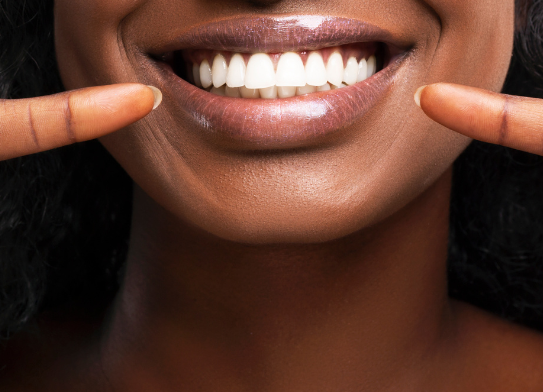Cosmetic dentistry has evolved considerably in recent years, and patient expectations are higher than they have ever been. According to American Dental Association reports, dental spending is still significantly lower than it was before the pandemic. However, this does not imply that the market for cosmetic dentists is dwindling. People are actually more interested in fixing their smiles than ever before due to increasing social pressures to appear their best.
Emotional Dentistry
According to a recent study, more than 80% of those polled believe their teeth appear unattractive in photos, and 28% say they go out of their way to hide their teeth on social media. Meanwhile, 42% said the first thing they would alter about themselves was their smile. As a result, the subject of dentistry has evolved to include what is known as “emotional dentistry.”
Although the term “emotional dentistry” is not commonly known among patients, there is a good possibility that you have already experienced some aspects of it as part of the care you receive from your dentist. Simply stated, it is the practice of understanding a person’s emotional connection to their smile and then assisting them in achieving a smile they can be proud of.
We don’t need to inform you how depressing it is to dislike your own smile. If you aren’t completely pleased with the appearance of your smile, you may have established habits of hiding or downplaying your smile for photographs. You may also be hyper-aware of your teeth in social settings and get-togethers, a sensation that is amplified during high-pressure events such as first dates or job interviews.
Day after day, week after week, these minor instances of worry and anxiety can add up to a significant emotional burden. You may come to believe that you can never be the best version of yourself, or that you are afraid to let people see the true you. Fortunately, your dentist can help you relieve this emotional burden by treating your smile and restoring its beauty using a wide range of methods and techniques to correct all types of dental problems. Some of these methods and treatments include teeth whitening, orthodontics and braces, veneers, dental implants, and much more.
3D Printing for Cosmetic Dentistry
Dentistry is a rapidly growing industry for 3D printing. The dental 3D printing market is expected to be worth $12.18 billion USD by 2028, according to a recent BlueWeave Consulting study. The report emphasizes the requirements of an aging populace as well as rapid technological advances. In brief, patients require treatment, which 3D printing can provide. However, demand is not limited to the therapy of incapacitating conditions. It is critical to identify the increasing demand for cosmetic dental treatments.
To begin, one cause for this expansion is clear demand. Dentistry and esthetics are inextricably linked, and it is difficult to distinguish between purely esthetic and merely practical procedures. Crooked, stained, or fractured teeth have a well-documented negative impact on self-esteem and confidence. Furthermore, visually imperfect teeth may have been okay years ago but are not always today. In the United States, everyone from Hollywood celebrities to the 77-year-old president has had visible dental treatment, providing them a youthful and healthy look. Patients are increasingly following these models and seeking aesthetic solutions. As the desire for dentistry grows, 3D printing will play a role.
Prosthodontics is the most common market application. (the creation of artificial teeth). Orthodontics and implantology also account for a sizable market percentage. In addition, they point out that 3D printing is used in dentistry to make patient-specific models with complex geometry. Dentists can also make implants and orthodontic retainers, as well as models of the mouth. Because CAD allows the machine to create the exact desired product, additive manufacturing is quicker than conventional methods and produces less waste. Increased efficiency may result in a single dental appointment rather than several, which is more convenient and beneficial to anxious patients. The report notes that VAT photopolymerization is the most popular method in terms of market share for these procedures, but FDM and SLS are also common.
Laser Cosmetic Dentistry
Laser dentistry is the use of lasers to address various dental conditions. In 1989, it was widely used in clinical dental practice for procedures involving tooth tissue. When compared to drills and other non-laser tools, laser dentistry may provide a more comfortable treatment choice for a variety of dental procedures requiring hard or soft tissue. LASER is an acronym that means for “light amplification by stimulated emission of radiation.” The device produces light energy in the form of a very narrow and focused beam. When this laser light strikes tissue, it causes a reaction that allows it to remove or mold the tissue. Laser dentistry is used for many different treatments, including treating hypersensitivity, addressing dental decay, managing gingivitis, and teeth bleaching.
Lasers can improve the efficiency, cost effectiveness, and comfort of dental procedures. Laser dentistry has been approved by the Food and Drug Administration (FDA) as a treatment choice for a variety of dental conditions. It’s worth mentioning that the American Dental Association (ADA) has yet to do so, despite their optimism about the field’s potential.
Look for a qualified dentist for laser treatment who has completed educational courses and gotten the necessary training. Dental schools and dental associations, as well as the Academy of Laser Dentistry, are popular sources of instruction. (ALD). You can also seek recommendations from your insurance provider and friends and family who have had good experiences with laser dentistry. Websites with rating systems can also be helpful, but it’s important to check to see if the raters are providing unbiased feedback.
Patient Comfort and Convenience Will Remain Essential
Customers want ease and convenience more than ever before. Expect to see more cosmetic dentistry practices providing more options to treat dental anxiety and provide greater customer convenience in 2023. Many people are nervous about going to the dentist, and an increasing number of cosmetic dentistry practices are offering innovative methods to help patients of all ages relax in the chair. When patients are at ease, it is simpler for a cosmetic dentist to provide the necessary care. To help patients relax, many cosmetic dentistry practices now offer a range of innovative tools and techniques. Some practices provide amenities such as noise-cancelling headphones, comfortable seating, and soothing music to create a more relaxing atmosphere in the waiting room and treatment areas.
Many cosmetic dentistry practices also offer sedation dentistry, which involves the use of medication to help patients feel calm and relaxed during dental procedures. Sedation options can range from mild to moderate, depending on the patient’s needs and the complexity of the procedure. For example, nitrous oxide (also known as “laughing gas”) is a mild sedative that can help patients feel more relaxed and comfortable during simple cosmetic procedures, while oral conscious sedation involves taking a pill that produces a deeper state of relaxation. In addition, some cosmetic dentists use virtual reality headsets to help patients relax during treatment. These headsets can provide patients with a distracting, immersive experience that takes their mind off of the dental procedure, helping to reduce anxiety and discomfort.




